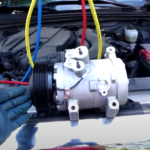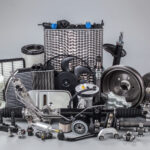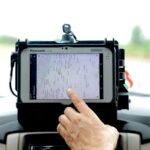Car ownership can become a financial burden, especially with fuel prices continuously rising. According to a recent ‘Your Driving Costs’ report by the American Automobile Association, car operating costs rose 11% this year, reaching a median price of USD$10,728. Thus, it’s unsurprising that some skilled individuals turn to minor fixes or do-it-yourself projects.
Wires, hoses, bolts, and pins comprise a majority of hidden car parts. If you don’t know how they work, you might end up causing more damage to your vehicle. So, it’s best to send your car to a reputable repair shop if you’re unsure when to use clevis pins vs detent pins.
If you’re confident about your mechanical skills, it’s helpful to familiarize or refresh your knowledge of small parts like machine pin fasteners before opening your car’s hood.

What Are Machine Pin Fasteners?
Machine pin fasteners are used in multiple industrial applications and aren’t exclusive to automobile manufacturing. However, they’re especially valuable in cars; these machines feature a complex connection of interlinked parts that must be aligned and connected.
Securely fastened parts ensure the device works seamlessly and safely on the road. For instance, a vehicle steering system includes steering swivel pins or bolts that provide a steering joint in an automobile. If worn out or not securely fastened, it can make your car harder to control, leading to accidents.
Machine pins are available in two forms: quick release and semi-permanent. Quick-release pins generally comprise a spring mechanism to simplify installation and dismantling activities. On the other hand, semi-permanents are more secure and need special tools for fastening and unfastening.
Also Read:
- Top 5 Best Cordless Impact Wrench For Changing Tires
- Different Types of Screws in Fastening Process
- 24 Most Common Types of Pliers and Their Uses (With Pictures)
Different Types Of Machine Pin Fasteners
Besides the difference in their unlocking and locking mechanisms, these valuable industrial and automotive parts are also made from different materials, including brass, steel, and copper. Machine pin fasteners can also come with special features depending on their use. For instance, some resist corrosion while others are more conducive to electricity.

Here are some of the machine pin fasteners in your car and other pieces of industrial machinery.
1. Cotter Pins
These machinery pin types are often used to hold nuts and pins together and are commonly installed to reinforce other fasteners. For example, cotter pins can be used alongside clevis pins to keep the latter in place, especially for applications where other parts need to be securely attached to shafts.
2. Dowel Pins
Dowel pins are meant to fit snugly to specific parts to prevent slippage. These fasteners are often used in the furniture and automotive sectors to align attached sections accurately. In cars, dowels are utilized in several applications in engines, transmission systems, and gear casings.
Piston pins are mounted on the skirt, link the piston and connecting rod, and are considered dowel pin types. Often made from high-grade steel, piston pins need to withstand heavy and repetitive pressure due to the pistons’ back-and-forth movements.
3. Spring Pins
Spring pins are also known as roll or tension pins, and they often come in two forms: coiled and rolled. Coiled spring pins are molded into a cylindrical model, while rolled spring pins come in various shapes.
These fasteners are made from steel alloys and can be used as locking tools, positioning devices, wiring sleeves, or shafts. In vehicles, they hold components together and are often found in the vehicle’s powertrains. Spring pins are also installed to position or fix engine blocks, cylinder heads, and gaskets. They’re also utilized to seal the gears.
4. Hitch Pins
These machine pin types are used widely in locking, removing, and replacing two vehicles, for instance, a trailer and another car or a receiver hitch. They can be used to secure your trailer or cargo carrier and prevent theft.
Different hitch pins include wire snappers, safety, and lock pins; so are clevis and detent pins.
Clevis pins:
These hitch pins serve as a hinge and are often held by cotter pins. Clevis pins are known for their flat head and cross-hole end, where cotter pins are inserted. In the automotive sector, clevis pins are used in cars, agricultural vehicles, sailboats, and aircraft to make the attached sections more resilient to engine vibrations.
Detent pins:
These fasteners feature a locking ball and spring, pushing the ball to the pin. Detent pins are installed in gearboxes. Externally, they’re located beneath the passenger compartment, while they’re mounted with screws in the gearbox case and comprise the mechanisms inside the gearbox.
Linch Pins
While known to keep wheels and other devices in place, linch pins are also used as fasteners. They often have a ring loop attached to their heads, useful for connecting heavy objects onto cars and trailers to prevent shifting and as a temporary replacement for broken chains.
Concluding Thoughts
Cars are complex machines that can hold about 30,000 parts, depending on the type, model, and make. Therefore, it’s crucial to know the basic car parts before prying your vehicle open, including the machine pin fasteners installed, to prevent further damage. This blog hopefully helped increase your confidence in handling minor vehicle fixes or learning more about a car’s mechanical structure.








